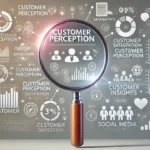Introduction
Reading people like an open book is no longer just the stuff of dreams. With the help of Neuro-Linguistic Programming (NLP), you can now become a master of reading people’s body language, verbal cues, and non-verbal behavior. NLP is a behavioral technology that helps people gain the skills and understanding necessary to be successful in life. By modeling excellence and developing your own psychological flexibility, you can learn to understand the subtle nuances of communication and respond effectively. In this blog post, we will explore the fundamentals of NLP and how it can help you read people like an open book. We’ll look at the techniques and strategies for effectively interpreting people’s behavior, as well as the potential applications of this knowledge. We’ll also discuss the importance of developing flexibility and an open mind in order to best interpret the behavior of others.
Verbal and non-verbal communication
Verbal and non-verbal communication are essential elements in effective communication. Verbal communication is direct and requires the use of words in order to send and receive messages. It is necessary for conversations, presenting ideas, and expressing emotions. Non-verbal communication, on the other hand, is subtle and can take the form of facial expressions, posture, gestures, and body language. This form of communication is important in order to supplement verbal language and convey a message without having to use words. Both verbal and non-verbal communication are instrumental in providing clarity and understanding in personal and professional relationships. It is important to be aware of the nuances of both forms in order to communicate in a clear and effective manner.
Importance of building rapport for persuading someone
Building rapport is an essential component of successful persuasion. It helps to establish trust and connection between parties and opens the door to meaningful dialogue. Establishing rapport includes active listening, understanding the other person’s point of view, and being understanding and respectful of the other person’s feelings. Using a positive tone, showing appreciation, and validating the other person’s point of view are all key elements of building rapport. Having patience and taking the time to build a relationship is vital in order to gain the other person’s trust. When someone knows, likes, and trusts you, they are much more likely to say yes to your request. Therefore, building rapport is key to successful persuasion.
People only pay attention to verbal communication
Verbal communication is the primary mode of communication in many settings, from professional to social. However, this focus on verbal communication can lead to people disregarding other important forms of communication, such as body language and facial expressions. While verbal communication is the basis for expressing one’s thoughts, there is often more meaning conveyed in non-verbal cues. For instance, a person’s tone of voice or a facial expression can often convey more about their true feelings than the words they are saying. Therefore, it is important to pay attention to all forms of communication, both verbal and non-verbal, in order to gain a complete understanding of the situation. This can help people to better interpret the message being conveyed and to foster effective communication.
Various ways in which non-verbal communication occurs
Non-verbal communication is communication that does not involve verbal language. It can carry a message, express emotions, and convey information. Examples of non-verbal communication include body language such as facial expressions, eye contact, and posture; gestures such as hand movements and sign language; and physical contact, such as hugging and handshakes. Non-verbal communication can supplement verbal communication and can enhance the understanding of a message. It can also provide emphasis, show support, and provide a sense of security. Non-verbal communication can be a powerful tool in professional settings, such as business meetings, customer interactions, and team building events. With effective use of non-verbal communication, professionals can provide a clear, meaningful, and effective message that all parties can understand.
NLP patterns for building rapport
Neuro-Linguistic Programming (NLP) is a powerful tool for building rapport with others. It can identify patterns in communication, allowing us to understand and connect with others in more meaningful ways. NLP can create better rapport in business relationships, as well as in social settings. It can recognize common expressions, body language, and eye movements, as well as to identify the underlying emotions behind a person’s words. NLP can be used to learn more about a person’s values, beliefs, and motivations. By understanding these factors, we can create more meaningful and productive relationships. Additionally, NLP can be used to identify the most appropriate language to use in a given situation, helping us to speak more effectively and to create a better connection with others.
Conclusion
Ultimately, communication is a powerful tool that can influence and persuade people. Verbal communication is important, but non-verbal communication should not be overlooked. It is essential to understand the various ways in which non-verbal communication can be used, such as body language, facial expressions, eye movements, breathing patterns, tonality, and gestures. Additionally, NLP patterns can create emotional rapport and persuasive communication. With the right understanding of verbal and non-verbal communication, you can learn how to effectively communicate with others to accomplish your goals.











